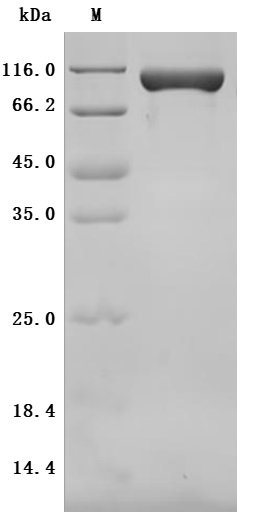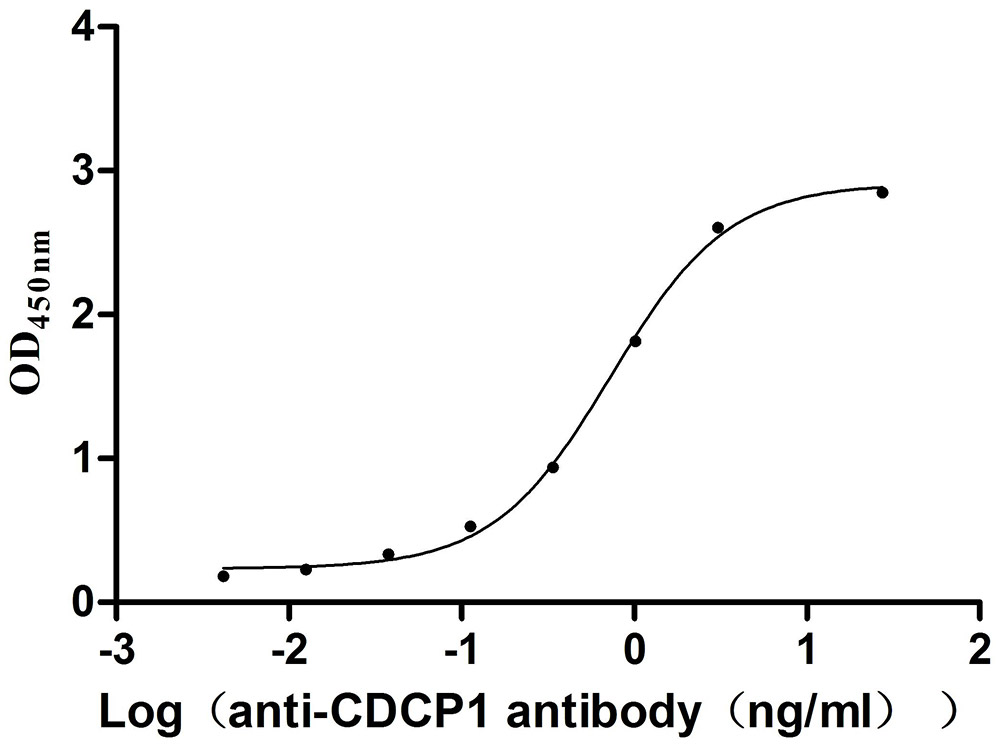Recombinant mouse CDCP1 protein is generated using a mammalian cell expression system. The process involves fusing the gene segment encoding mouse CDCP1 (30-666aa) with a 10xHis-tag gene at the C-terminus and inserting it into a plasmid vector. The recombinant vector is then introduced into mammalian cells, which are cultured to allow protein expression. The resulting recombinant mouse CDCP1 protein exhibits purity above 95%, validated via SDS-PAGE, and endotoxin levels below 1.0 EU/ug, determined by the LAL method. Its binding activity is confirmed through assays with CDCP1 recombinant antibody (CSB-RA884474MA1HU), with the EC50 of 0.6397-0.8369 ng/ml.
CDCP1, a new human tumor-related gene reported in 2001, exhibits restricted expression in normal human tissues but is upregulated in most cancers, playing a critical role in tumor initiation, progression, and relapse. Clinical studies indicate a poor prognosis associated with CDCP1 in lung cancer, pancreatic cancer, renal cell carcinoma, ovarian cancer, and hepatocellular carcinoma. The signaling pathways regulated by CDCP1 play a significant role in promoting cancer and mediating resistance to chemotherapy and targeted therapy, making it a potential novel target for early cancer treatment. Furthermore, CDCP1-related antibodies display high affinity and specificity, underscoring CDCP1's suitability as a rational target for developing receptor-targeted drugs. Mouse CDCP1 shares approximately 88% homology with human CDCP1, suggesting similar structure and function. Currently, there is limited research on CDCP1-related drugs, and no clinical drugs are available. Thus, developing mouse CDCP1 protein can facilitate the screening of cross-recognizing clinical drugs targeting CDCP1 and enable animal model experiments.








